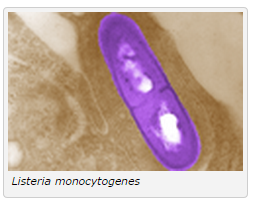In 2010, Listeria monocytogenes was estimated to infect 23,150 people worldwide. It killed 5,463 of them, or 23.6 percent, according to a new study by European researchers in the World Health Organization (WHO) published in The Lancet Infectious Diseases.
The researchers say that an urgent effort is needed to fill in information on Listeria infections in developing countries, as countries accounting for 48 percent of the world’s population do not report Listeria illnesses.
The study, ”The Global Burden of Listeriosis: A Systematic Review and Meta-Analysis” aimed to be the first of its kind to estimate the global numbers of illnesses, deaths, and disability-adjusted life-years due to Listeria infections.
While not as common as foodborne pathogens such as Salmonella and E. coli, Listeria is one of the most deadly and adaptable bacteria found in food. Unlike those pathogens, Listeria can grow at refrigeration temperatures and in low-moisture environments.
Of those who fell ill with Listeria in 2010, 20.7 percent were pregnant women. The bacteria affect pregnant women at disproportionate rates and can cause severe complications with pregnancies, including stillbirth and miscarriage.
Among the pregnant women who suffered Listeria infections, 14.9 percent of the infections resulted in infant fatality.
Other populations especially susceptible to Listeria infections include the elderly, immunocompromised individuals, and children. While the bacteria often just cause mild gastrointestinal illness in healthy adults, they can lead to severe, life-threatening illness in anyone with a weakened or developing immune system.
Most Listeria cases are reported in high-income countries, while cases are much more likely to go unreported in developing countries. Because of its high hospitalization rate in the U.S., it’s the third most costly foodborne pathogen, behind Clostridium botulinum (botulism) and Vibrio vulnificus.
The researchers found that Listeria caused the highest burden on quality of life in Latin American regions. The least affected region was Eastern Europe, stretching from Poland to Turkey. Other highly affected areas included Southeast Asia, Africa, Polynesia and India.
The researchers note that Listeria causes significantly fewer deaths worldwide than Salmonella Typhi (216,500 annual deaths) or non-typhoidal Salmonella (155,000), but it does cause a far higher rate of death.
The effort to quantify the global burden of Listeria will enable Listeriosis to be an included disease in WHO’s international prioritization exercises. But because nearly half of the world’s population resides in countries where Listeria isn’t reported, there’s still significant uncertainty about the exact burden the bacteria pose worldwide.
In 2011, cantaloupe contaminated with Listeria infected at least 147 people in the U.S. and killed at least 33, making it one of the deadliest foodborne illness outbreaks in U.S. history. A Listeria outbreak in Denmark this year killed at least 15 people and sickened 38.
Common sources of Listeria in the U.S. include ready-to-eat lunch deli meats, hot dogs, meat spreads, unpasteurized dairy, smoked seafood and raw sprouts.
